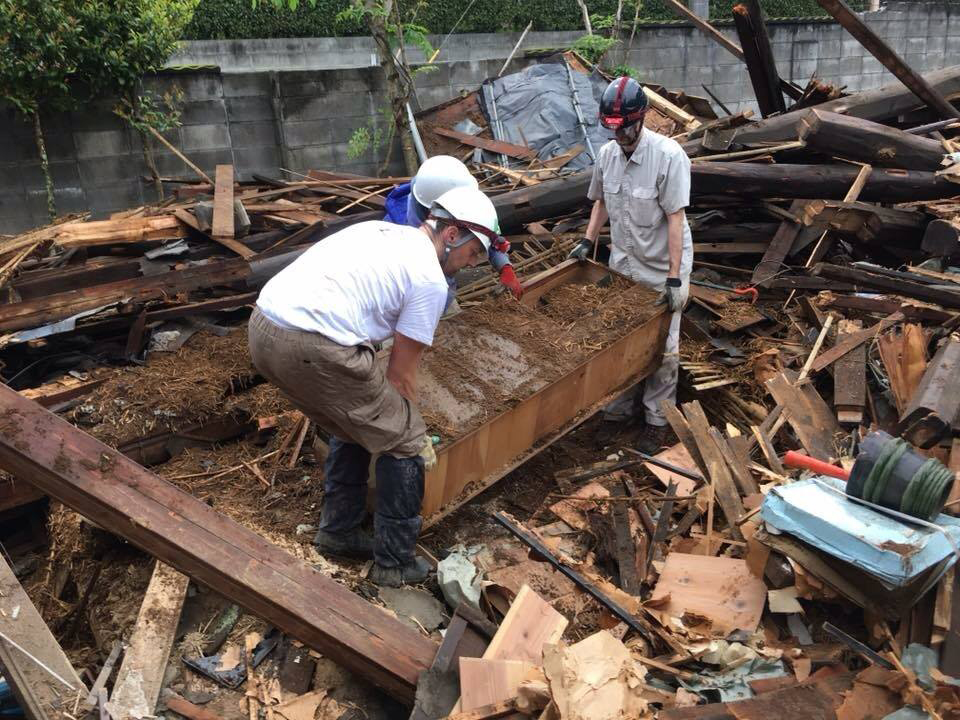Casualty statistics can give a misleading impression of the havoc inflicted by natural disasters. For instance, the most recent updates for the magnitude-6.5 and 7.3 earthquakes that hit Kumamoto and Oita prefectures on April 14 and 16 give casualty figures of 49 killed and more than 2,000 injured. It may be tempting to add "only."
But as I discovered when I arrived in Mashiki town near Kumamoto city with volunteers from It's Not Just Mud and IDRO Japan (International Disaster Relief Organization Japan) on April 20, such statistics tell only part of the story. They say little about the lives upended as thousands of homes were destroyed, or other homes rendered temporarily uninhabitable by disconnected utilities, overturned furniture, trashed possessions and rotting food. They are silent on the stress of coping with continued aftershocks, and the discomforts of being reduced to living in evacuation shelters or cars. This all became apparent to us as we commenced work in the most heavily damaged parts of the town near the Mashiki Cultural Center.
Some have wondered whether there are too many volunteers in Kumamoto. The truth is, as many volunteers are needed as can help the many homeowners who want possessions recovered from destroyed homes, or who need trash and heavy broken appliances pulled out of their otherwise intact dwellings so they can become inhabitable again. The problem is how to accommodate volunteers in limited space with limited resources, and how to coordinate their activities to the best effect.

















With your current subscription plan you can comment on stories. However, before writing your first comment, please create a display name in the Profile section of your subscriber account page.